|
McCloud River Lumber Company Locomotive #1 GE 70-ton Built- 1955 c/n- 32302 Horsepower- 600 |
|
|
|
By all accounts, buying a diesel was about the absolute last thing the McCloud River Lumber Company wanted to do in 1955. The company had been actively trying to get out of the railroad logging business for a couple years, but the rough topography in area south of the McCloud River slowed the transition to truck logging. The McCloud River Railroad forced the issue when they advised the lumber company the steam era shop facilities in McCloud would shortly be demolished in favor of a new diesel shop. The railroad itself had been completely dieselized since 1953, though the lumber company continued leasing the Prairie type locomotives from the railroad for use on its logging railroads, and the railroad wished to retire that power. The lumber company briefly evaluated smaller steam locomotives both the Southern Pacific and Long-Bell Lumber Company had available locally, but the complete lack of locally available steam shops would make working on them difficult. This all forced the lumber company to go diesel shopping, and GE offered both a 70-ton model that would be nearly ideal for use on logging spurs and an attractive financing package. The large box on top of the cab roof of the resulting McCloud River Lumber Company #1 is not fully explained, but analysis of available photos strongly suggest it's a water tank for a rail washer. All locomotives apply sand to help steel wheels gain traction on steel rails, and many diesels in shortline and logging service carried such rail washers that would rinse the sand off the railhead after locomotive passed, which in turn eased the passage of the following cars and may have reduced rail and wheel wear. The #1 had several posts mounted around the box, likely to deflect tree branches that might otherwise puncture the tank, and a close examination shows faucet style spigots and extra piping around the trucks not present on other 70-tonners. In the end, the lumber company hardly even broke the locomotive in, as they only accumulated 5,065 operating hours across 506 operating days in the six years they owned it. McCloud asked $65,000 for the machine, and the Port of Tacoma promptly stepped forward to buy it. |
|
|
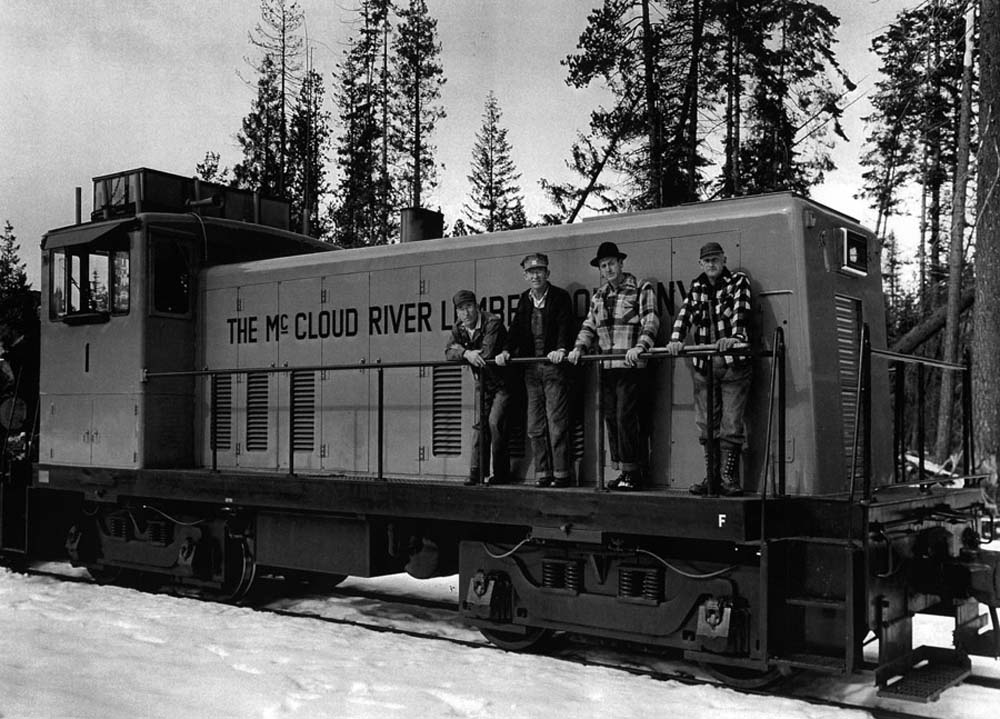 |
| The #1 with its crew. Crewmen are identified as (left to right) Elmo Bevley, Fireman; Bob Hogue, Engineer; Ruel Methvin, Conductor; and ? Fillmore, Brakeman. Elmo Bevley had been the regular engineer assigned to the #24 before the arrival of the #1, and Bob Hogue had been the regular engineer assigned to the #25 before the arrival of the #1. The #1 was based out of Kinyon for its entire career on the McCloud. Photo from the collection of Dennis Sullivan. |
|
|
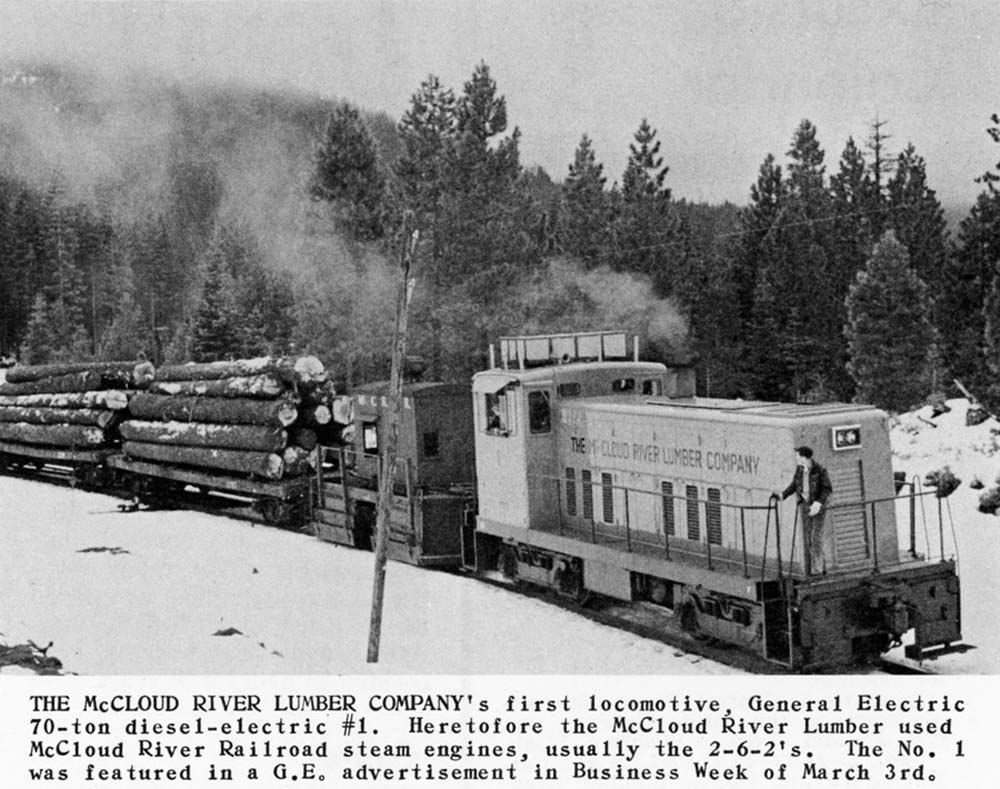 |
| News item on the McCloud River Lumber Company #1 from the Western Railroader Issue #198. |
|
|
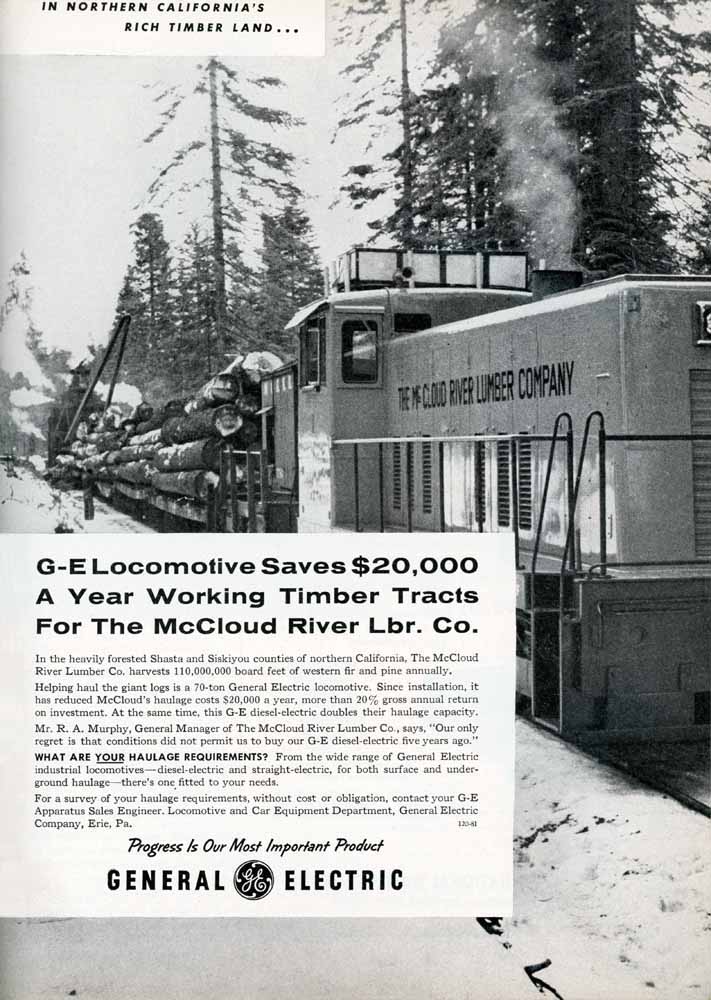 |
| This is a General Electric advertisement that appeared in Business Week. |
|
|
 |
| The photo McCloud River Lumber Company distributed in its efforts to sell the #1. Ron Sims collection. |
|
|
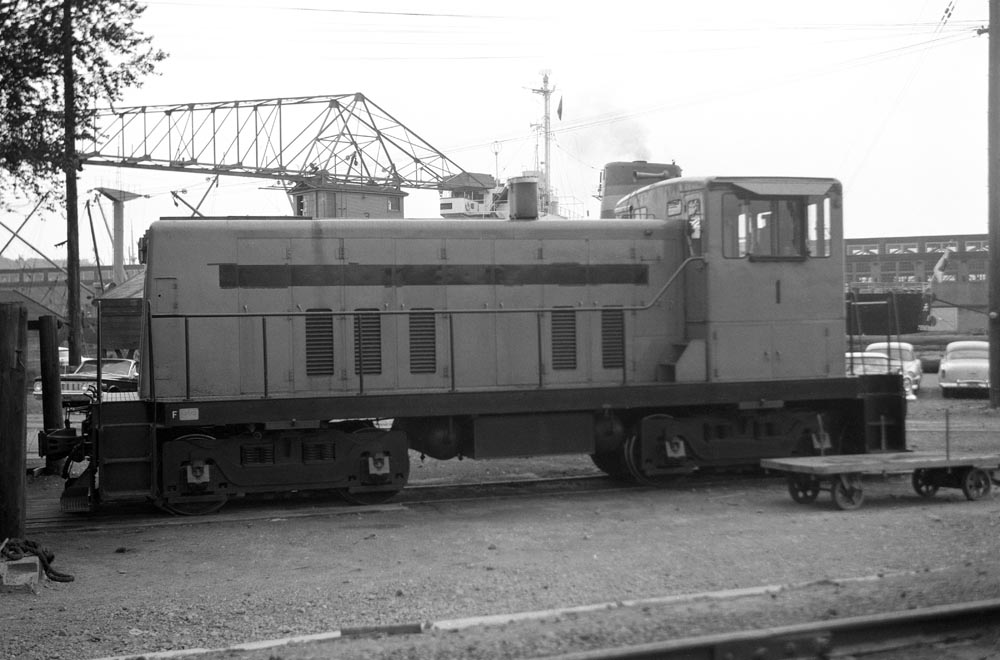 |
| The former #1 immediately after arriving on the Port of Tacoma. Ron Sims collection. |
|
|
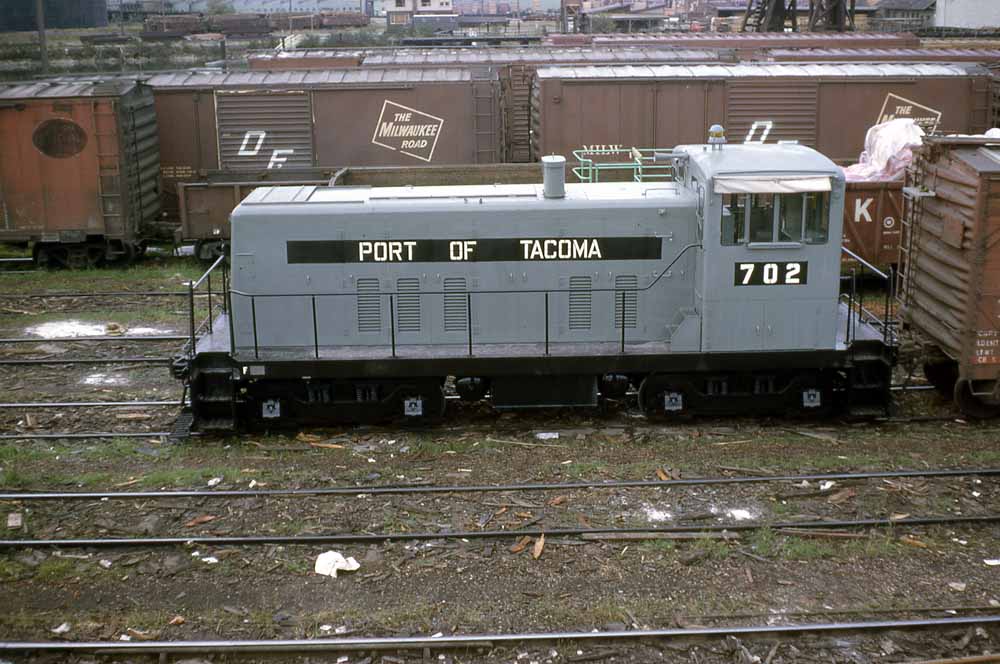 |
| A color photo of the Port of Tacoma #702 taken circa 1965. Jeff Moore collection. |
|
|
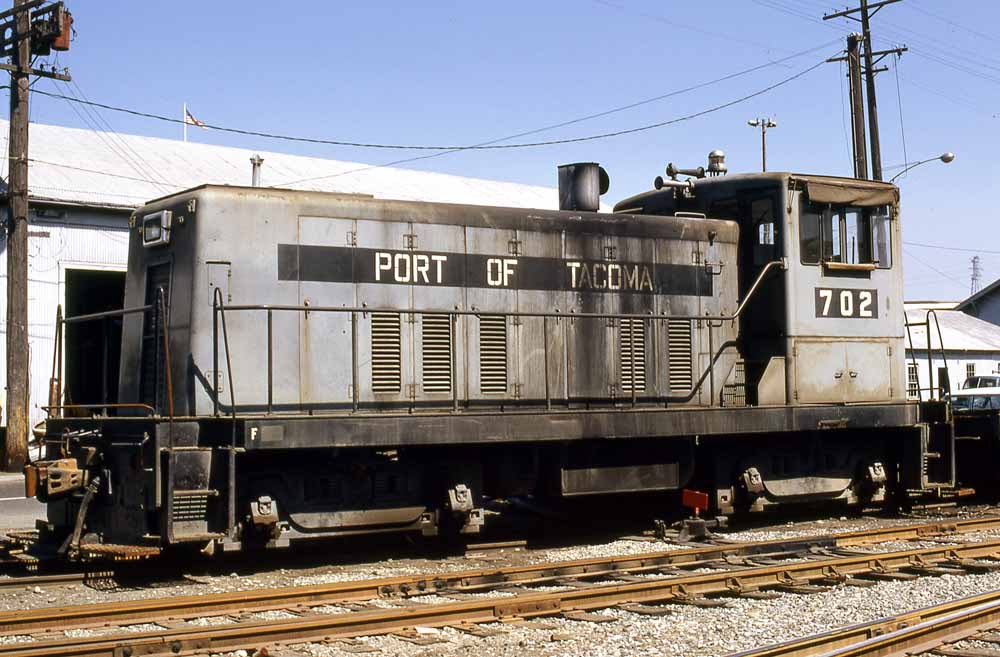 |
| A color photo of the Port of Tacoma #702 as it was around 1970. The unit is still wearing its McCloud River Lumber paint, with the McCloud lettering and the red on the handrails and walkways painted black. |
|
|
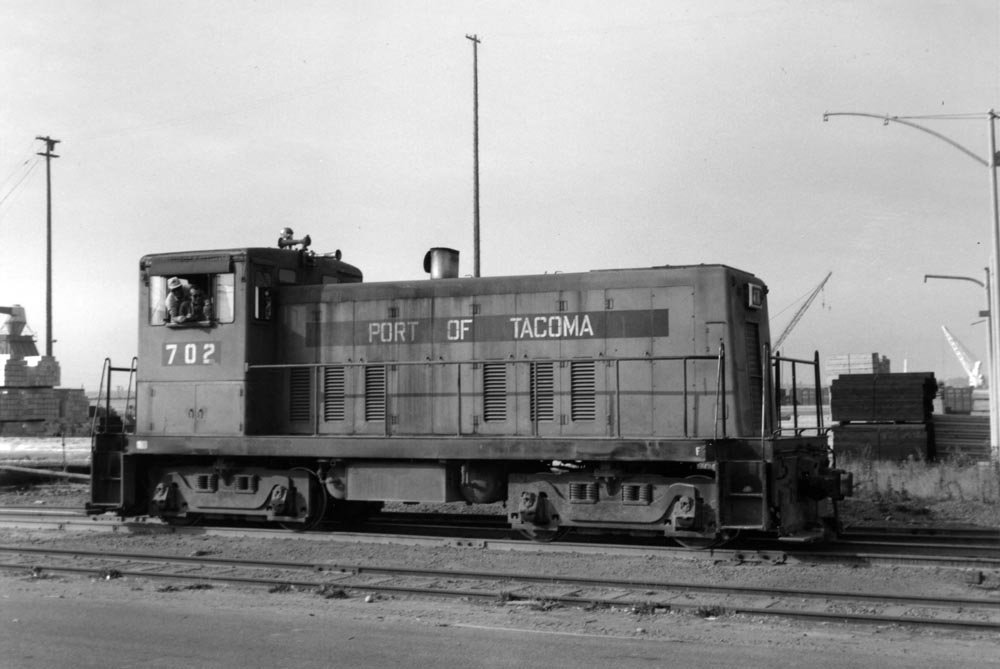 |
| Undated photo of the #702 late in its tenure on the Port of Tacoma. |
|
|
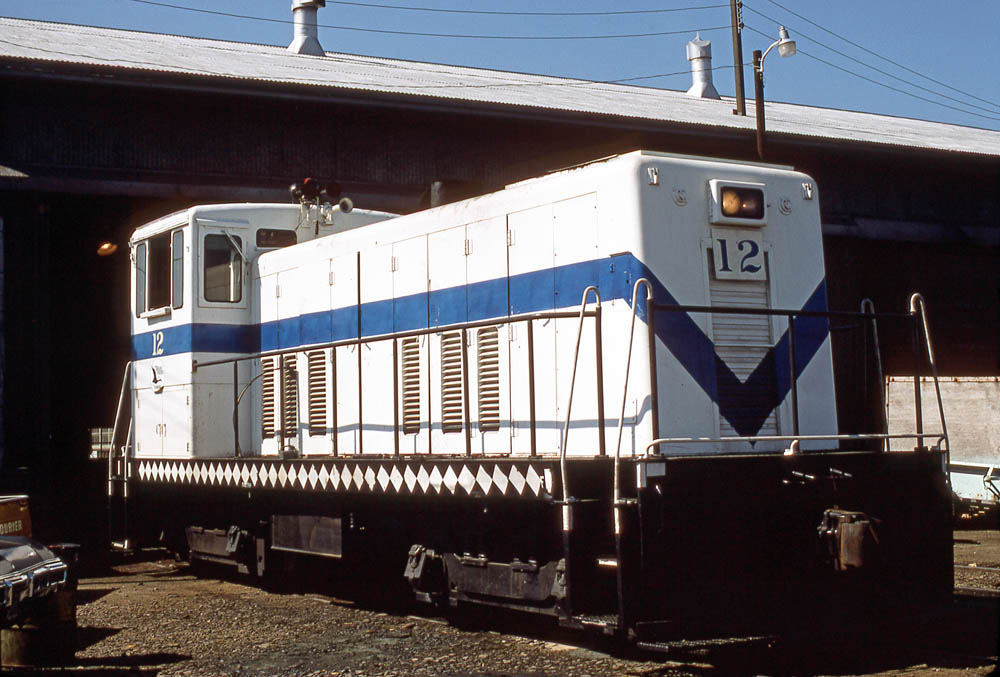 |
|
The former McCloud River Lumber Company #1 as Oregon Pacific & Eastern #12 in Cottage Grove, Oregon. Keith Ardinger photo.
|
|
|
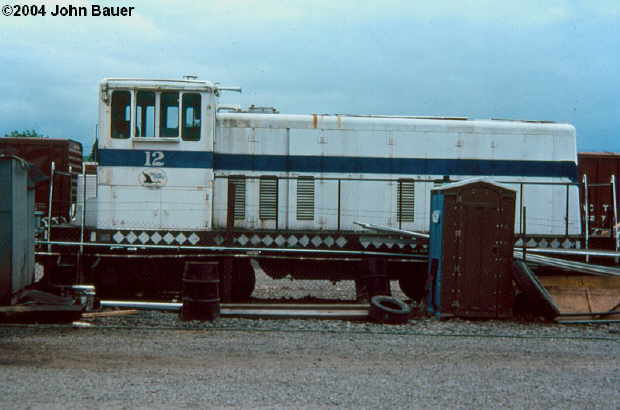 |
|
Another photo of the Oregon Pacific & Eastern #12 in Cottage Grove, Oregon on 6 July 1981. John Bauer photo-Rob Jacox collection, used with permission.
|
|
|
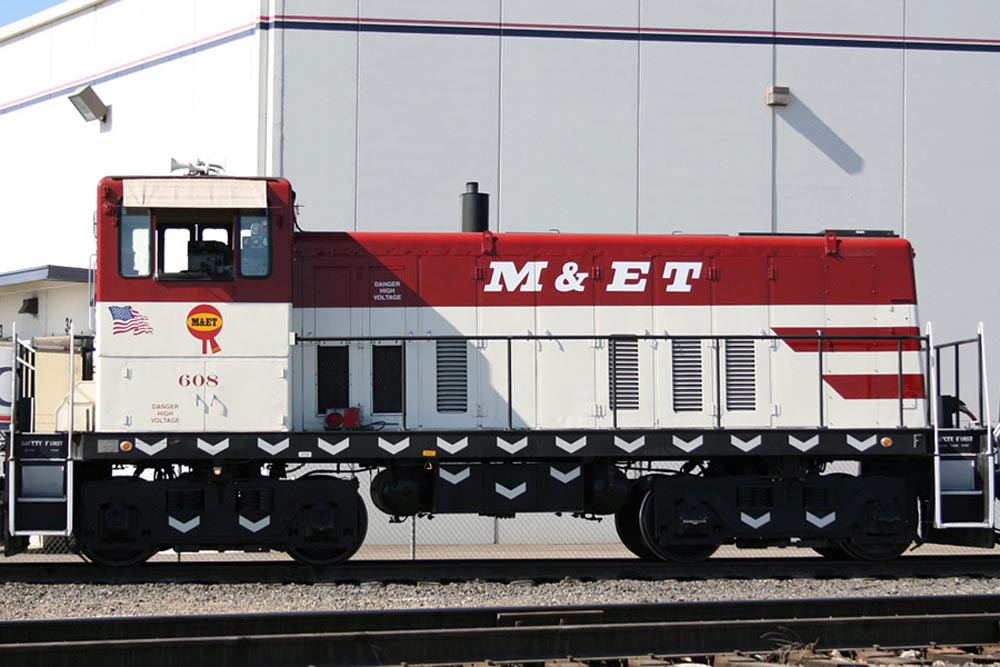 |
|
The former McCloud River Lumber Company #1 as Modesto & Empire Traction #608. Rob Jacox photo.
|
|
|